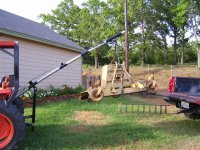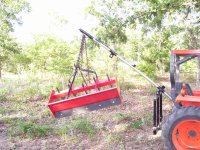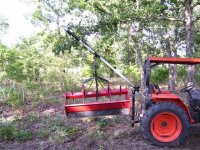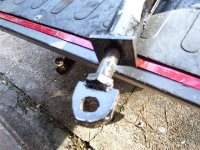RobJ
Elite Member
Got the boom pole built last week and tested this weekend. I went with the straight pole design, where the pole is the top link (IE no top link needed). Because of the materials I used I have to make a couple changes, I already cut off the part of the square frame below the pins (allow the 3pt to go all the way down, and will re drill the holes at the pivot...thus lowering the pole height at it's lowest position. But after getting into the office this morning I noticed I probably overloaded it. My 5' FM is heavier than I thought. 530#. Boy that truss strap was tight. Another reason I'm going to strengthen it as well. The box blade is much lighter, about 420#. The inner lifting eye also makes it easier to handle. With the FM on the back, I could just about tip the tractor over by hand!! But the idea is to just move in into the back of a pickup...and I can lift it and back the truck under it so the tractor doesn't have to move. This pole is easier to handle to.
Rob
Rob




